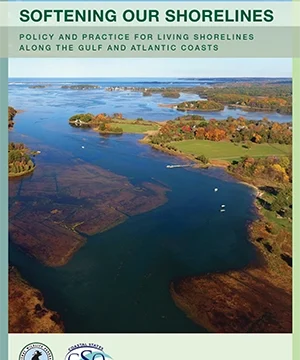Story & News Search
Use the search field or filters below to narrow your search.
Filter by Category
The burial of “blue carbon” in coastal marsh soils is partially offset by marsh-atmosphere methane (CH4) fluxes, but this offset may be greater if other […]
The authors draw evidence from studies along the east and gulf coasts of the United States, where much research and implementation of oyster reef restoration […]
One of the paramount goals of oyster reef living shorelines is to achieve sustained and adaptive coastal protection, which requires meeting ecological (i.e., develop a […]
In addition to suitable substrate, successful oyster recruitment requires an adequate supply of planktonic larvae, followed by the subsequent survival and growth of early post-settlement […]
The American Shore & Beach Preservation Association (ASBPA) and Coastal States Organization (CSO) partnered with the U.S. Army Corps of Engineers’ (USACE) Institute for Water […]
Over the past two decades the use of living shorelines to address coastal erosion has increased dramatically as landowners seek more natural solutions to shoreline […]
Oyster reefs or beds are a globally imperiled marine habitat, with degradation primarily driven by anthropogenic factors such as overharvest, changes to hydrology and salinity […]






